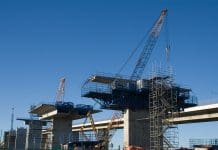It’s been a tumultuous year for the construction sector. The vote to leave the European Union in June certainly pushed some firms into difficulties, while others noticed little change and even benefited from the decision. For the industry, however, the issue of Brexit remains a question mark. What will leaving the union mean for the future? In particular what will it mean for the workforce? Construction is an industry that relies heavily on skilled workers from the EU and while there is such uncertainty over what negotiations with our EU partners will look like it is difficult to predict the impact of this on construction output.
There have also been significant legislative changes this year for the industry. Firstly, the Housing and Planning Bill and then later with the Neighbourhood Planning Bill. The former was not without its fair share of controversy and saw significant resistance to some parts of the Bill as it moved through the legislative process. Meanwhile, the latter still continues its journey through the House of Lords and is proving to have its fair share of issues too. The push towards more community-focused building offers potential to ensure less speed bumps when it comes to getting approval on developments, but there are still concerns over what the final Bill will look like, with Housing Minister Gavin Barwell having to reassure MPs earlier this month about parts of the Bill. The government seems determined to push construction to the forefront to meet its housing targets, but will the measures be enough? That remains to be seen.
However, there is no doubt technology has its part to play in creating a more efficient, robust and effective construction industry. BIM continues to grow from strength to strength. With government support backing the field it remains apparent this will continue to be the case. In April, a new mandate made it so that all public sector tenders must be compliant in BIM Level 2, and since then many firms have striven to show they meet these requirements. 2017 should see a push into BIM Level 3, with the field continuing to gather pace.
For energy efficiency the year was a mixed bag too. The failure of the Green Deal and the death of the Zero Carbon Homes strategy last year left the sector a little up in the air. The Bonfield Review, which was published just a few days ago, might be a step in the right direction to get the field back on track, but it is clear the government needs to focus more on ensuring carbon reduction in the built environment remains at the top of the agenda.
It has also been a year of change for the PBC Today team. This year we launched our new, improved website and have grown from strength to strength since it launched in the summer. So as we ready to leave 2016, the team here would like to thank you for your ongoing support. We look forward to bringing you all the latest news and updates from the sector in 2017.
Merry Christmas and we’ll be back in the New Year!














![[VIDEO] World’s largest crane lifts final ring at Hinkley Point C Big Carl, the world's largest crane, lifting the final liner ring for Hinckley Point C](https://www.pbctoday.co.uk/news/wp-content/uploads/2024/10/94747-218x150.jpg)